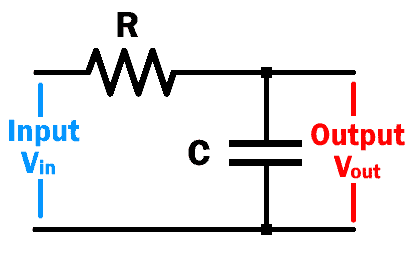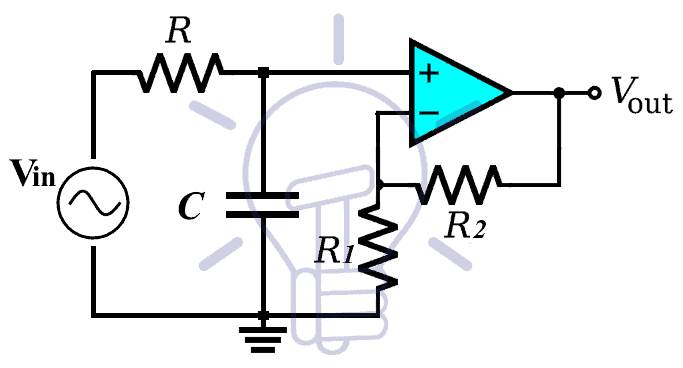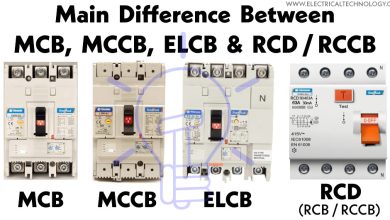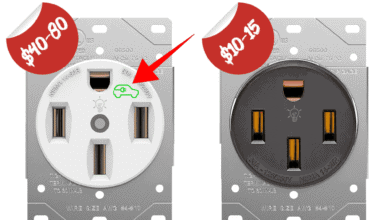Differences between Active and Passive Filter
What is the Difference Between Active and Passive Filter?
Active filter and passive filter are both types of electronics filters that filter a specific frequency or a range of frequencies from a signal. Apart from frequency filtering, they are quite different in design as well as performance.
Before going into the differences between active and passive filters, let’s discuss their basics first.
What is a Filter
A filter is an electronic circuit that has the ability to pass or amplify a certain range of frequencies and block or attenuate other frequencies. They are used for filtering specific frequencies from a signal. Filters are used in signal processing such as removal of noise from a signal and extraction of a message from a signal etc.
There are different types of filters such as digital and analog filters, active and passive filters, linear and non-linear, low-pass, high pass, bandpass filters, etc. We are going to discuss the differences between the active and passive filters.
- Related Post: Filters, Types of Filters and Their Applications
What is Active Filter?
Active filter is a type of filter that is designed using active components such as op-amp and transistor. They are used in combination with resistor and capacitor but not inductor. Such filters are capable of providing a power gain. However, their design is complex as compared to passive filters.
Since active filters use active components, they require an external power supply to operate. The filtered signal does not require amplification. Whereas the gain can be modified by varying a certain parameter during operation.
Op-Amp has very high input impedance and very low output impedance. Therefore, the active filter does not have loading effect problem at its source and load. Also, varying the load does not affect the performance of the filter because the load is isolated from the source.
The drawback of an active filter is the requirement of an external source. The filter’s performance depends on the external source’s health. The active components used in active filters have limited bandwidth. Therefore, they are not suitable for filtering high-frequency signals. They are also more susceptible to damage from large current.
Features of Active Filter
- Active filters use active components such as op-amp and transistor.
- It also includes passive components such as resistor and capacitor but not inductor.
- It requires an external power source to operate.
- It has very high input impedance and very low output impedance.
- It can be easily cascaded to increase the order of the filter without worrying about the loss in magnitude.
- It provides a high power gain at its output.
- Change in the load resistance does not affect its electrical characteristics.
- It has complex circuitry.
- It has a compact design and has a small size.
- It is expensive as compared to passive filters.
- It has a limited frequency range due to the limited bandwidth of active components. It cannot operate at high frequency.
- It cannot handle large currents.
Related Posts:
What is Passive Filter?
Passive filter only uses passive components such as resistors, capacitors and inductors, etc. it has a very simple design and is very cheap. This filter does not require an external power source to operate and that is why they do not provide any power gain. However, they do use an inductor that makes them able to withstand high current.

The load resistance is directly connected and affects the overall resistance of the filter. Therefore any change in the load resistor affects the electrical characteristics of the filter. It has limited input and output impedance, their performance is affected by loading affect.
Since passive components consume power from the input signal, the passive filter does not provide power gain and the output signal has a lower magnitude than the input. It requires amplification post-filtering.
Features of Passive Filter
- Passive filter use only passive components such as resistor, capacitor and inductor.
- It does not require an external power source.
- It does not provide any power gain.
- The change in load resistance affects the characteristics of the passive filter.
- It has no frequency limitation and is mostly used for high-frequency applications due to the use of inductor.
- For low-frequency applications, it requires a large inductor which increases the size and cost of the passive filter.
- It has a simple and easy design.
- It is cheaper than an active filter.
- It has a larger size and heavy due to bulkier inductors.
Related Posts:
Key Differences between Active and passive Filter
| Active Filter | Passive Filter |
| Active filter uses active components such as Op-amp and transistor | Passive filter uses passive components such as resistor, capacitor and inductor. |
| It requires external power source to operate | It does not require an external power source. |
| It provides a high power gain | It does not provide power gain. |
| It has a very high input impedance | It has a medium input impedance. |
| It has a low output impedance | It has a medium output impedance |
| Its characteristics do not change with change in load | Its electrical characteristics vary significantly with changes in load. |
| It includes active as well as passive components except for the inductor. | It is only made from passive components |
| It has frequency limitation due to limited bandwidth of op-amp | It has no frequency limitations. |
| It does not have resonance problems | They are affected by resonance |
| It has a high Q factor | It has a low Q factor |
| They are expensive | They are relatively cheaper |
| It cannot handle large current. | It is stable and can withstand large current. |
| It has a complex design | It has a simple design |
| They are compact and have small size. | Due to the use of inductor they are bulkier and heavy. |
Comparison between Active and passive Filters
Power Source
- Active filter require an external power source to operate.
- Passive filter does not require an external power source to operate.
Gain
- Active filter provide a high power gain and amplify the output signal.
- Passive filter does not provide any power gain. In fact, the output signal has a lower magnitude than its input signal.
Design
- Active filter has a complex design.
- Passive filter has a simple design.
Loading Effect
- Active filter does not have a loading effect problem because it has low output and high input impedance.
- Passive filter has a loading effect issue.
Bandwidth
- Active filters have frequency limitations and cannot filter high-frequency signals due to the limited bandwidth of active components.
- Passive filter does not have any frequency limitations.
Size
- Active filter are compact and they have a small size and weight.
- Passive filters are bulkier due to inductor size and heavy especially at a low frequency that requires large inductors..
Cost
- Active filters are expensive and costly due to active components and the requirement of a power source.
- Passive filters are made from cheap passive components.
Related Posts:
- Active and Passive Frequency Filters – Formulas & Equations
- Electronic Filters Symbols – Electrical & Electronic Symbols
- Difference Between Thermistor and Thermocouple
- Difference Between Sensor and Actuator
- Difference between Sensor and Transducer
- Difference Between Clipper and Clamper Circuit
- What is The Difference Between Transistor & Thyristor (SCR)?
- Difference between Active and Passive Components








